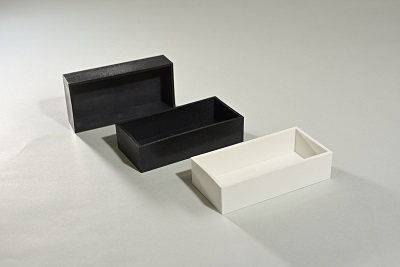The Polyplastics Group has launched at K 2019 a new DURANEXⓇ polybutylene terephthalate (PBT) grade that has the outstanding electrical properties traditionally found in PBT, while also offering other important performance attributes. DURANEXⓇ 750AM is a 30% glass-reinforced, flame-retardant (FR) grade with low warpage, high rigidity, and heat and moisture resistance (hydrolysis resistance).
DURANEXⓇ 750AM is ideally suited for automotive applications such as communications devices and high-pressure parts for electric vehicles (EVs) and hybrid electric vehicles (HEVs).
Until now, it has been difficult to satisfy requirements for both flame resistance and hydrolysis resistance because hydrolysis resistance typically decreases with the addition of a FR component. There has been an increasing demand for FR materials in the automotive market for use in communication devices and high-pressure parts for EVs and HEVs. These materials must also meet the auto industry’s need for high durability and outstanding formability. DURANEXⓇ 750AM and other PBTs also meet the demands of electrical and electronics applications.

Polyplastics can produce low-warpage PBT materials such as DURANEXⓇ 750AM via three methods. First, the anisotropy of the shrinkage rate can be reduced by using spherical and plate-like fillers with low aspect ratios rather than fiber fillers. This reduces warpage, but can also adversely affect mechanical strength.
Second, the absolute value of the shrinkage rate can be reduced by forming alloys with amorphous resins such as PC and SAN. This method results in a small reduction in mechanical strength, while the amorphous resin also has an effect on thermal properties and other factors. Third, improving flowability and reducing pressure distribution (shrinkage rate distribution) inside the cavity can reduce warpage, though not as much as the aforementioned two methods.














